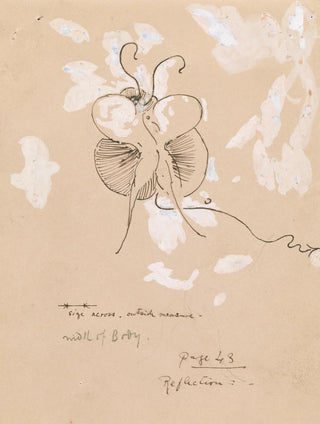Art print | Butterfly - James Abbott McNeill Whistler


View from behind

Frame (optional)
James Abbott McNeill Whistler's "Papillon" art print is a true ode to delicacy and elegance. In this painting, the artist manages to capture the very essence of his subject, a butterfly, symbol of lightness and transformation. The atmosphere emanating from this work transports the viewer into a universe where natural beauty blends with art, offering a visual experience that is both soothing and fascinating. The art print of this iconic piece allows for rediscovering Whistler's universe, a master of color and light, while adding a touch of sophistication to any space.
Style and uniqueness of the art print
Whistler's style is often characterized by a subtle and refined approach, and "Papillon" is no exception. The artist uses delicate nuances to depict the butterfly, creating a play of light that highlights the fragility of the insect. Pastel shades, mixed with touches of brighter colors, reveal an impressive mastery of the palette. Whistler, known for his penchant for chromatic harmony, succeeds in establishing an almost ethereal atmosphere, where each element seems to float in a space of serenity. The composition, meanwhile, is carefully balanced, with every detail designed to guide the eye and evoke emotion. This art print stands out for its ability to evoke a sense of calm and contemplation, inviting the viewer to immerse themselves in a moment of reflection.
The artist and his influence
James Abbott McNeill Whistler, an emblematic figure of the Impressionist movement, left a mark on art history with his innovative approach and unique vision. Born in 1834, this American artist spent much of his life in Europe, where he developed a distinctive style that combines Japanese influences and European techniques. Whistler was also a fervent advocate of the idea that art should be appreciated for its aesthetic beauty rather than its narrative content. His influence extends far beyond his works, affecting generations of artists who sought to explore color and form in an abstract manner. "Papillon" embodies this philosophy, focusing on the est

Matte finish

View from behind

Frame (optional)
James Abbott McNeill Whistler's "Papillon" art print is a true ode to delicacy and elegance. In this painting, the artist manages to capture the very essence of his subject, a butterfly, symbol of lightness and transformation. The atmosphere emanating from this work transports the viewer into a universe where natural beauty blends with art, offering a visual experience that is both soothing and fascinating. The art print of this iconic piece allows for rediscovering Whistler's universe, a master of color and light, while adding a touch of sophistication to any space.
Style and uniqueness of the art print
Whistler's style is often characterized by a subtle and refined approach, and "Papillon" is no exception. The artist uses delicate nuances to depict the butterfly, creating a play of light that highlights the fragility of the insect. Pastel shades, mixed with touches of brighter colors, reveal an impressive mastery of the palette. Whistler, known for his penchant for chromatic harmony, succeeds in establishing an almost ethereal atmosphere, where each element seems to float in a space of serenity. The composition, meanwhile, is carefully balanced, with every detail designed to guide the eye and evoke emotion. This art print stands out for its ability to evoke a sense of calm and contemplation, inviting the viewer to immerse themselves in a moment of reflection.
The artist and his influence
James Abbott McNeill Whistler, an emblematic figure of the Impressionist movement, left a mark on art history with his innovative approach and unique vision. Born in 1834, this American artist spent much of his life in Europe, where he developed a distinctive style that combines Japanese influences and European techniques. Whistler was also a fervent advocate of the idea that art should be appreciated for its aesthetic beauty rather than its narrative content. His influence extends far beyond his works, affecting generations of artists who sought to explore color and form in an abstract manner. "Papillon" embodies this philosophy, focusing on the est






